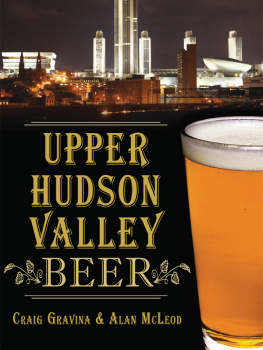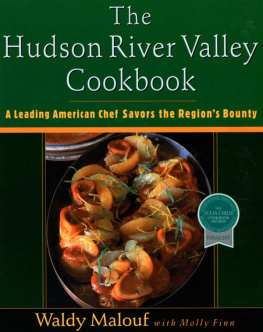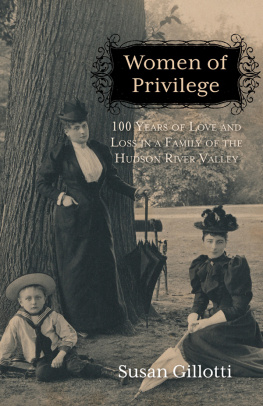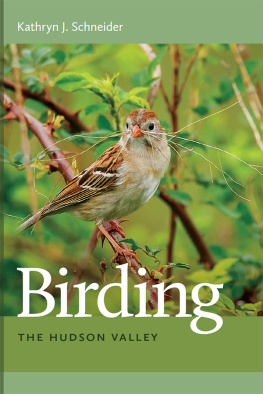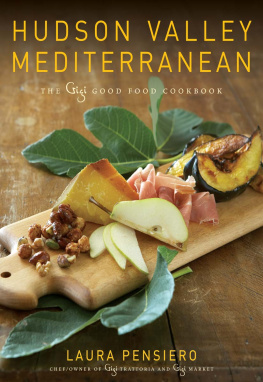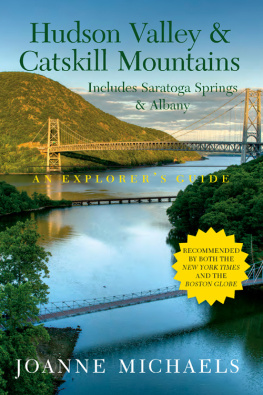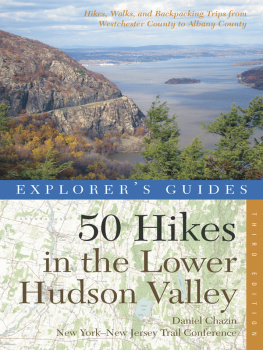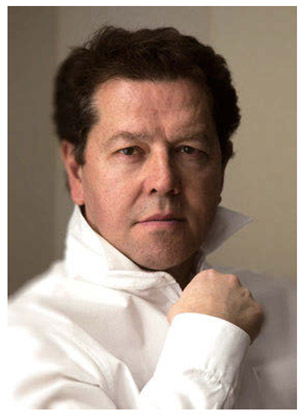About the Author
Julia Sexton stepped into the role of restaurant critic for Westchester Magazine in 2007, after fifteen years cooking in professional kitchens. She has published articles in the New York Times, Boston Globe, and several magazines. Her food features, reviews, and recipe-based articles for Westchester regularly appear in the New York Times food blog What Were Reading. In 2009, Sextons own blog, Eat Drink Post, won the CRMA Best Blog Award in all subjects. A Hudson Valley native, shes been a local editor of Zagats Westchester and Hudson Valley Restaurant Survey since 2009.
About the Photographer
Andre Baranowski is a photographer best known for his beautiful and sensual still life, food, travel, interior, and landscape photography. His client list ranges from top American corporations like Benjamin Moore, Kelloggs, American Express, and Hearst to magazines like Saveur, Better Homes and Gardens, Garden Design, Food & Wine, Mens Health, Shape, Departures, Country Gardens, and many others. Andre has photographed a number of books including, Mediterranean Fresh by Joyce Goldstein, Sustainably Delicious by Michel Nischan, and The Kimchi Chronicles by Marja and Jean-Georges Vongerichten. He lives in Westchester County, New York. Visit him at andrebaranowskiphoto.com.
Acknowledgments
Even though I am a restaurant critic, I know, without the slimmest doubt, that even a middle-of-the-road chef knows more about food than the greatest critic. More succinctly put by Oscar Wilde (who, admittedly, came to a bad end), The critic has to educate the public; the artist has to educate the critic. In my working life as a restaurant critic, Ive tried to keep my eyes on the artists as I juggled my paltry quiver of words. Chefs will always have better weapons than writers, and thats why Ill always have my eyes trained on chefs.
I give my heartfelt thanks to Hudson Valley chefs who stole time from their unforgiving schedules to talk with me and contribute recipes to this book. Clearly, it is their bookI was just the one taking notes.
Thanks to the peerless photographer, Andre Baranowski, for embarking on this giant projectagainst, one must note, all practical sense. Andres hard work and stunning artistry give beauty to the document in your hands and I have been incredibly blessed by his collaboration. Andre, I owe you forever.
My deepest appreciation goes to Amy Lyons of Globe Pequot press for reaching out from the blue and taking a chance on a writer whose work is sometimes strewn with F-bombs and is often followed by nasty website comments. Im grateful to Amy for inviting me on this adventure and, also, for her patience when it finally came to an end. Thanks to Janet Crawshaw, publisher of the excellent Valley Table Magazine, for her gracious advice. Thanks to Esther Davidowitz for her timely encouragement and thanks to Nancy Claus for her empathy. Thanks to Westchester Magazine for indulging me these many years.
Thanks to Chef Peter Kelly for his unerring wisdom and kindness when I needed it most, at the beginning of my career. I know that I am not the only person in this book who has benefited from his quiet advocacy. Not only has Chef Kelly nurtured many of the voices in these pages, but, in his own pioneering restaurants in the Hudson Valley, Kelly foretold what our dining scene would become. Chef Peter Kelly is McArthur and Patton rolled into one; it is said that some call him The Pope (but thats never to his face).
Heartfelt thanks to Chef David DiBari for his blazing artistry, humor, and unshakable decency. Thanks to Stephen Paul Mancini and Chef Eric Gabrynowicz for effortless excellence irresistibly paired with elite intoxicants. Thanks to Chef Matt Hutchins for his Beacon insights and thanks to Chef Chris Vergara for his ability to cheerfully overlook my insanity. Thanks to Chef Christian Petroni, Rob Krauss, Coby Blount, and John T. Nealon for making me laugh until I cried. Thanks to Baron Ambrosia for enriching my life with preposterousness. Thanks to Chef Dan Barber and to Chef Zak Pelaccio for their generosity during long, often rambling, interviews.
This book could not have been written without the support of my husband, James Sexton, who has eaten with me and argued with me for the length of my career. Not only does he have one of the keenest minds that Ive ever encountered, but, when the day-to-night demands of my profession overwhelm our little family, he gamely steps up. Thanks from the bottom of my heart.
CAFE LE PERCHE
230 WARREN STREET
HUDSON, NY 12534
(518) 822-1850
CAFELEPERCHE.COM
OWNER: ALLAN CHAPIN; GENERAL MANAGER: JENNIFER HOULE;
BAKERS: NICHOLE LASKY AND ROBERT PECORINO
Even the smallest sparks can trigger great fires. At Cafe le Perche, that spark was breadin fact, one particular baguette. This baguette was baked in La Perche, a town almost smack in the geographical center of France; it was so delicious, so haunting, and so poetic that it inspired Allan Chapin to try to re-create it. To that end he disassembled an eleven-inch, seventeen-ton wood-fired oven (complete with a manually rotated baking stone) and had it shipped from France to Hudson, New York, where it was mortared into a basement of a former bank on Warren Street. The American bakers that Chapin hired to man this oven didnt exactly know what they were getting into.
Traditionally, the kitchen-classrooms in culinary schools feature the sort of steely equipment that comes to life when you press a red button. According to Cafe le Perches GM, Jennifer Houle, the morning routine at Cafe le Perche is far different. Its purely rustic. You have to load the fire and then manually vent it to get it to the right temperature. There are so many factors that not only affect the bread-baking but also affect the oven: the humidity, the wind, the temperature inside, the type of wood that were getting delivered. Theres a learning curve to working with this oven. Faced with a toolbox of rocks, fire, and wood, Cafe le Perches bakers found themselves working, essentially, in the Stone Age.
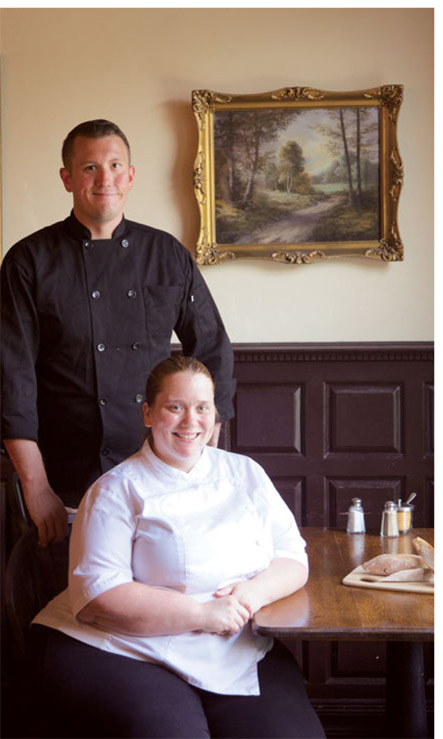
Then there was the challenge of re-creating the unique flours of France in the Hudson Valley. To help, Chapin imported Daniel Lambert, who baked the original baguette in Le Perche that inspired Chapins Hudson homage. Armed with a sack of flour that he smuggled from France, Lambert consulted with Wild Hive Farm in Clinton Corners, New York. The result is Cafe le Perches proprietary blend of locally milled soft white pastry flour and hard red wheat flour.
Meanwhile, there was Cafe Le Perches Warren Street buildings potential to exploit. Built in the 1830s, a time when bank deposits were not insured, the Hudson River Savings Bank relied on impressive architecture to instill faith. According to Houle, The original concept was just to open a bakery. But when I saw the bones of the building, I thought, This is just stunning, we need to do something more with this. The remodeling was peppered with happy discoveries. Says Houle, We found that grille behind the bar in the carriage house. It was the old teller cage from the time when the building was a bank. We used whatever we could find that was original.
Consistent with Chapins commitment to locally milled flour, Cafe le Perches sourcing is hyper-local. Says Houle, The original chef and I were at International Culinary Institute together, and the farm-to-table movement was huge. It was just a no-brainer to source our eggs, flour, milk, vegetables, and the proteins in the Hudson Valley. The kitchen at Cafe le Perche works in conjunction with Blue Spruce Farm in Ghent, New York. According to Houle, Its not a commercial farmthey primarily work with us. What we do is send them a list in the spring of what we would like to use for our menu and they plant the seeds. And we go out there and pick whenever we wantits been a partnership for the last two years. As the farm is growing, were growing with it, and using more of its stuff. We have plans to use more land for things like herbs, berries, apples, and peaches.


